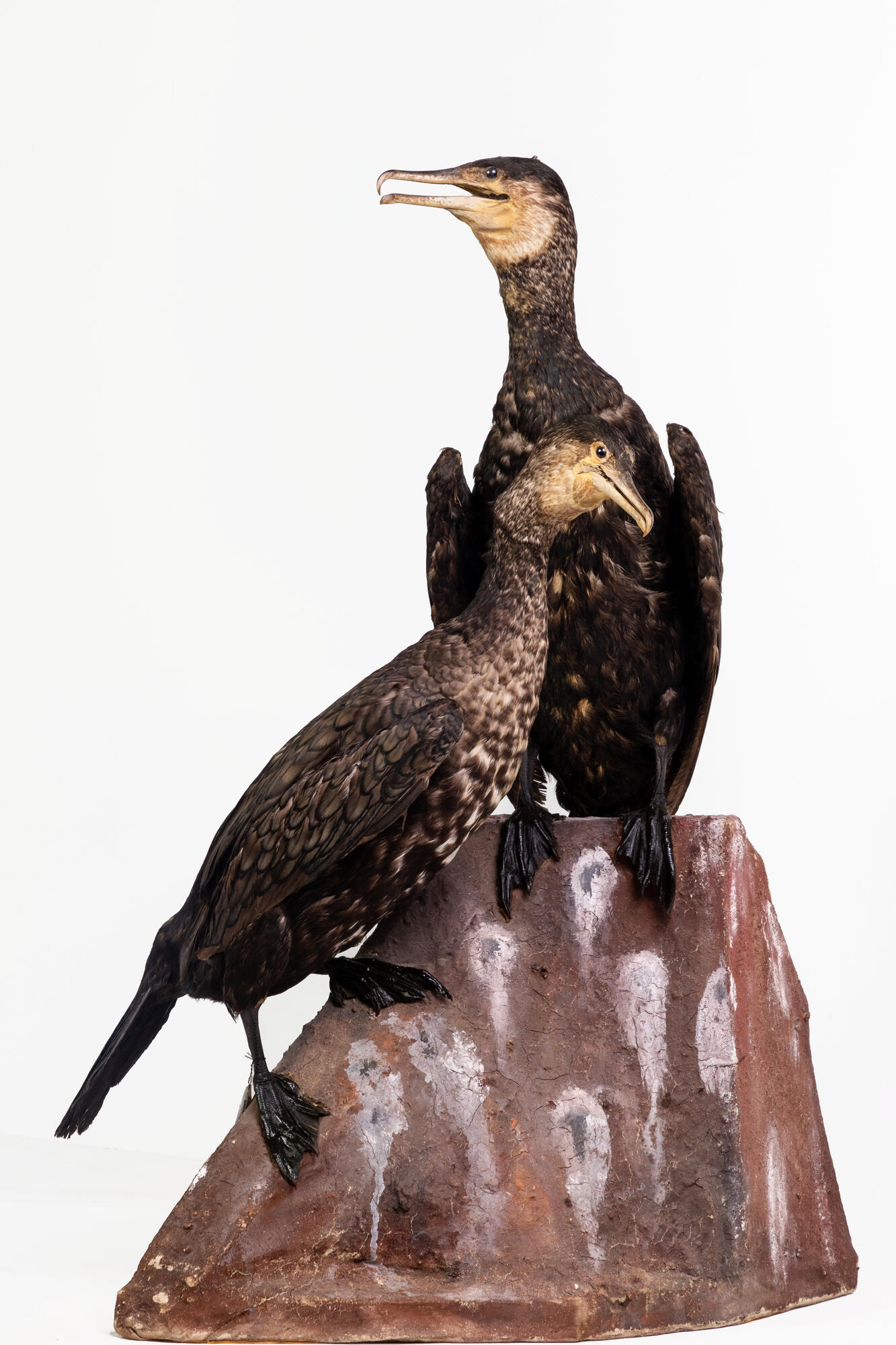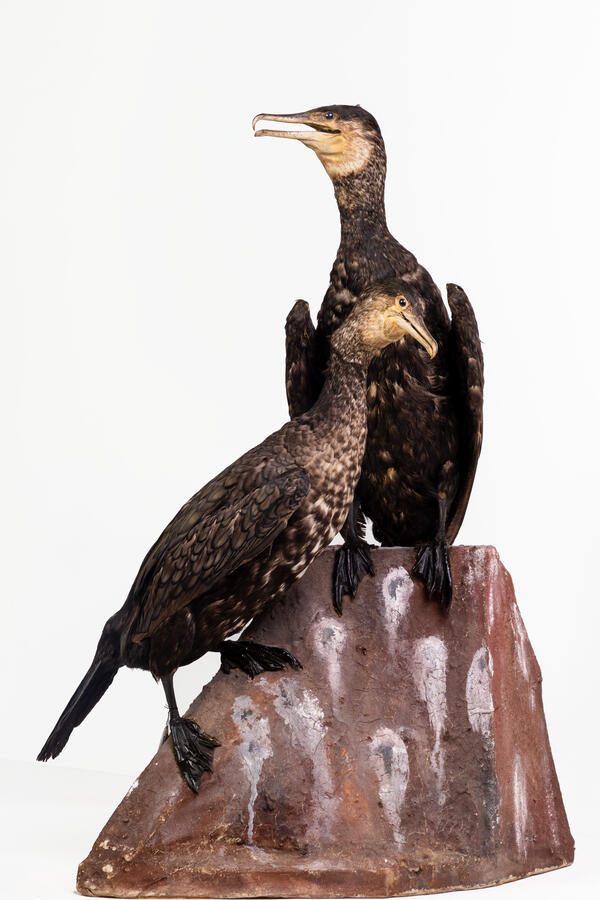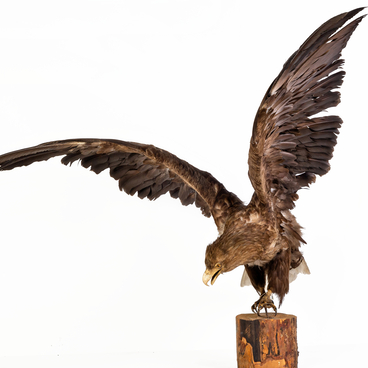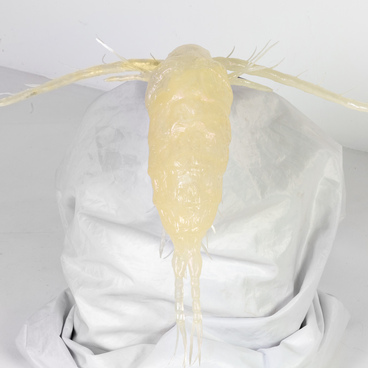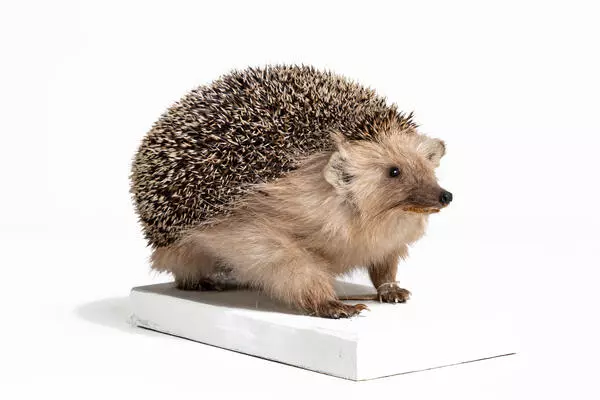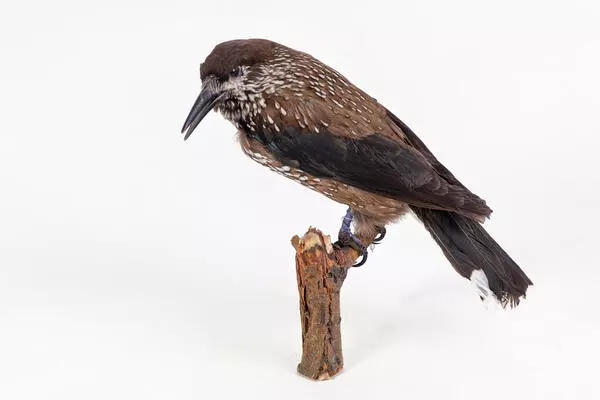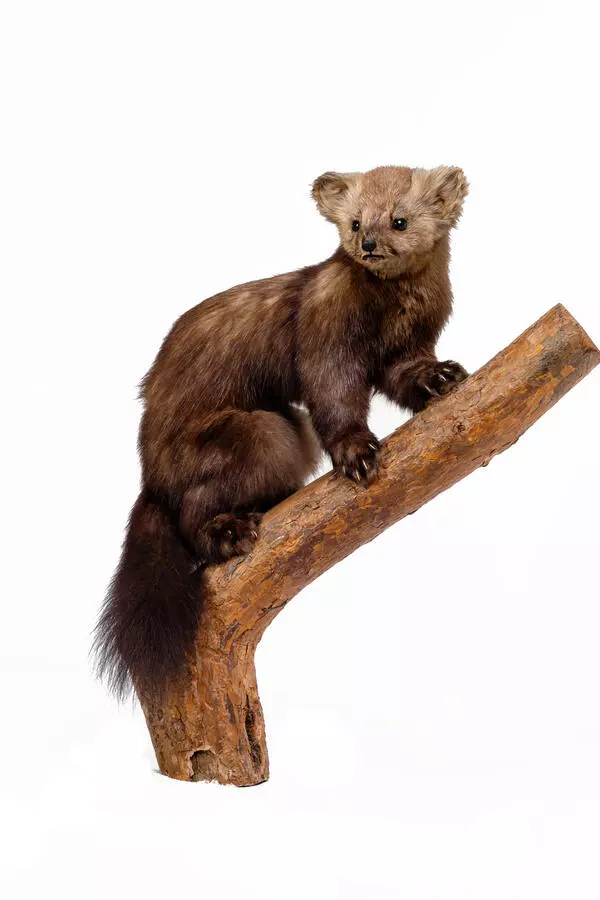The common cormorant is widespread all over the world. The name of the bird in Latin is ‘corvus marinus’, which means ‘sea crow’. The cormorant has a low-key appearance, and its long neck makes it showing great resemblance to a reptile.
Cormorants live near sandy or rocky shores and river mouths, and very rarely settle far from the coast. This species also breeds on rocks and coastal islands, or among boulders. Sometimes birds build nests in trees, bushes, reeds, and even on the bare ground. Cormorants live in colonies. Pairs of birds gather in huge flocks and nest together.
Cormorants are sedentary and migratory. In some areas, large groups of birds remain in breeding grounds and do not fly South.
On the ground, large cormorants are clumsy, but they are fast and agile when swimming.
The cormorant is a fishing bird. It requires from 400 to 700 grams of fish per day, for which the bird dives to a depth of 4 meters. When hunting for fish, the cormorant swims with its head low and looks for prey. When it sees a fish, it dives and hits it with a strong blow in the side, then grabs the fish with its beak. After surfacing, it kills the fish, thus damaging its gill cavity with its beak. Then with a sharp movement of its head, the cormorant throws the prey into the air to pick it up more conveniently. It swallows fish from the head.
While resting, cormorants gather on the shore in small flocks and sit in rows on the ground, on rocks, or on the tops of trees. Cormorants do not have a developed coccygeal gland, so after feeding, they dry their feathers in the sun. They sit for a long time spreading their wings, and their pose resembles heraldic eagles.
When the number of birds grew, the harm caused by cormorants to fisheries becomes noticeable. Because of this, cormorant colonies were destroyed, and some of them disappeared completely, in particular, a large colony on the Baikal Islands. Since 1962, the common cormorant has been extremely rare on Lake Baikal, and since 1969, nesting sites have not been recorded at all. For this reason, the cormorant was listed in the Red Books of the Irkutsk Region and the Republic of Buryatia. However, in 2006, its individual nesting sites were rediscovered. Now the population of the common cormorant on Lake Baikal has recovered.
Cormorants live near sandy or rocky shores and river mouths, and very rarely settle far from the coast. This species also breeds on rocks and coastal islands, or among boulders. Sometimes birds build nests in trees, bushes, reeds, and even on the bare ground. Cormorants live in colonies. Pairs of birds gather in huge flocks and nest together.
Cormorants are sedentary and migratory. In some areas, large groups of birds remain in breeding grounds and do not fly South.
On the ground, large cormorants are clumsy, but they are fast and agile when swimming.
The cormorant is a fishing bird. It requires from 400 to 700 grams of fish per day, for which the bird dives to a depth of 4 meters. When hunting for fish, the cormorant swims with its head low and looks for prey. When it sees a fish, it dives and hits it with a strong blow in the side, then grabs the fish with its beak. After surfacing, it kills the fish, thus damaging its gill cavity with its beak. Then with a sharp movement of its head, the cormorant throws the prey into the air to pick it up more conveniently. It swallows fish from the head.
While resting, cormorants gather on the shore in small flocks and sit in rows on the ground, on rocks, or on the tops of trees. Cormorants do not have a developed coccygeal gland, so after feeding, they dry their feathers in the sun. They sit for a long time spreading their wings, and their pose resembles heraldic eagles.
When the number of birds grew, the harm caused by cormorants to fisheries becomes noticeable. Because of this, cormorant colonies were destroyed, and some of them disappeared completely, in particular, a large colony on the Baikal Islands. Since 1962, the common cormorant has been extremely rare on Lake Baikal, and since 1969, nesting sites have not been recorded at all. For this reason, the cormorant was listed in the Red Books of the Irkutsk Region and the Republic of Buryatia. However, in 2006, its individual nesting sites were rediscovered. Now the population of the common cormorant on Lake Baikal has recovered.
